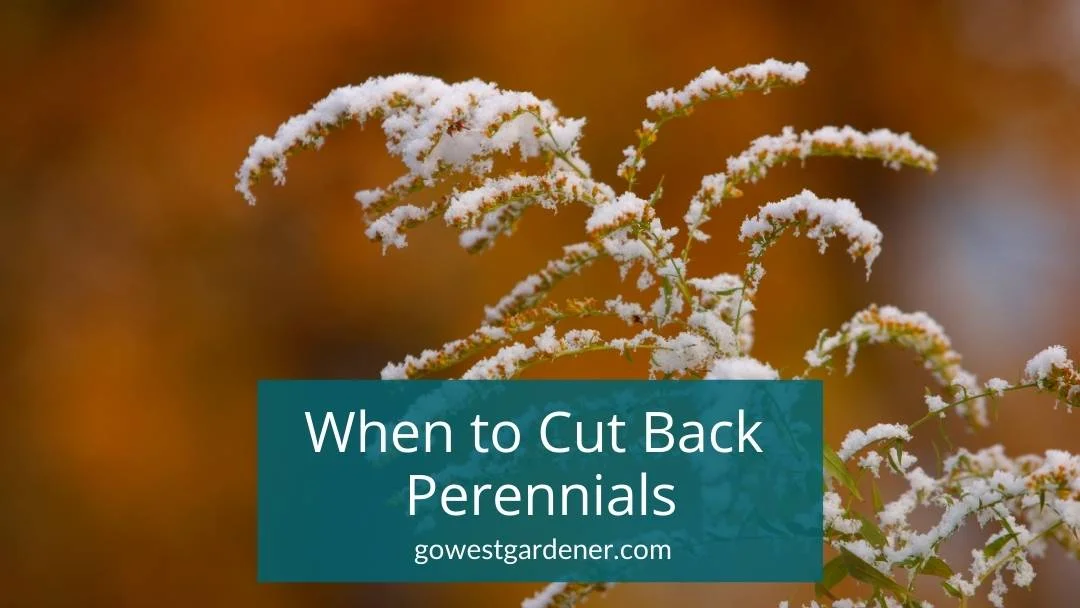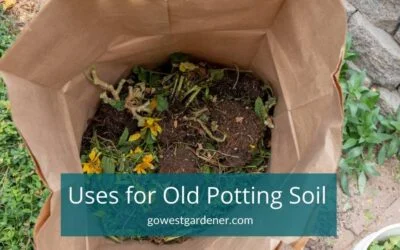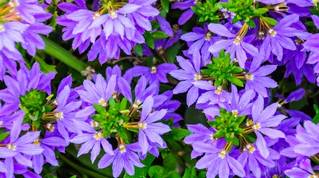It’s tempting to want to get out early in the fall and tidy up your western garden for winter, especially if you’re having a mild fall. But is it too early? When’s the best time to cut back perennials in Colorado and similar states?
In this article, you’ll get the scoop on:
- Why it helps to wait to trim down plants
- Whether it’s better to cut back perennials in the fall or spring in Colorado (hint: it depends!)
Let’s start with your garden in the fall…
No need to rush it. Put your feet up. Enjoy the fall color!
Your plants will thank you for it.
On autumn days, it may look like your perennials aren’t doing much. But they’re doing A LOT… under ground.
In the fall, soil temperatures are still warm, and air temperatures are cooling off. For most plants, these are ideal conditions for growing roots. And healthy roots are the secret to bigger, stronger plants next season, which is so important in our gotta-have-some-moxie West.
So, don’t cut back your perennials too early, especially if they’re still green.
Instead, let them gather as much energy as they can for their roots, so they can come back strong and showy in the spring. Wait until you’ve gone through several hard freezes before you get out your pruners. (A hard freeze is when temperatures drop to 28 degrees or below.)
When temps start dipping and dancing their way into the mid-20s, you’ll likely see the leaves on your perennials wither, brown, curl or drop. That’s your cue to prune IF you want to cut back your perennials in the fall.
Of course, then the question becomes…
Is it better to cut back perennials in the fall or spring in Colorado and similar western states?
The short answer is: It depends.
Mama Nature likes to keep us on our toes!
Let’s assume you don’t live in an area that’s at risk for wildfires. If so, there are LOTS of good reasons to wait until late March, early April or even later to clean up leaf litter and cut back most perennials. For example, you’ll:
- Make your winter garden more interesting with a variety of textures and seedheads.
- Help your plants survive our weird winter weather.
- Feed birds and provide homes for overwintering baby bees and other beneficial insects. Want to learn more? Check out these two articles: (1) Denver Botanic Garden’s tips on how waiting to clean up your garden helps birds and pollinators. (2) Colorado State University Extension’s tips on how bees and some butterflies/moths overwinter in gardens.
But there are a few instances when it helps to clean up some plants in the late fall. For example, it’s a good idea to cut back:
- Diseased plants or plants with pesky insects, so the problem doesn’t carry over to next season.
- Plants that spread seeds like a fairy godmother tossing pixie dust, assuming you don’t want more plants next year.
- Dried out leaves and stems if you live in a wildland-urban interface and your home has some wildfire risk. (The Colorado State Forest Service has a helpful PDF on how to clean up your plants to reduce wildfire risk.)
There is no one-size-fits all approach to western garden clean-up.
What I do in my Colorado perennial garden
When I first moved to Denver, I used to cut back my perennials in the fall. I left my flowerpot clean-up until the spring.
Now I do the opposite.
I tackle my flowerpots in the fall. (Here’s why.) And I wait until April to cut back the majority of my perennials. I wait until I see new spring growth appearing from the ground. I try to wait until late April to clean out the leaf debris in my garden.
Because native bees often nest in the pithy plant stems (like rose canes), I set aside those types of plant stalks once I trim the plants down. Some bees don’t emerge until later in the spring.
Why not clean up the garden earlier, like in the late fall or in February?
Two reasons:
- Unpredictable Colorado weather. I’ve learned the hard way that we tend to bounce back and forth between winter and summer. Big temperature swings in February, March and April can be tough on our plants. I leave last year’s growth on the plants as long as possible to give them as much protection as possible.
- Pollinators. Many bees that are nesting in plant stems and under leaf debris aren’t ready to emerge that early. Plus, our big temperature swings are hard on overwintering insects. The leaf litter helps insulate them.













